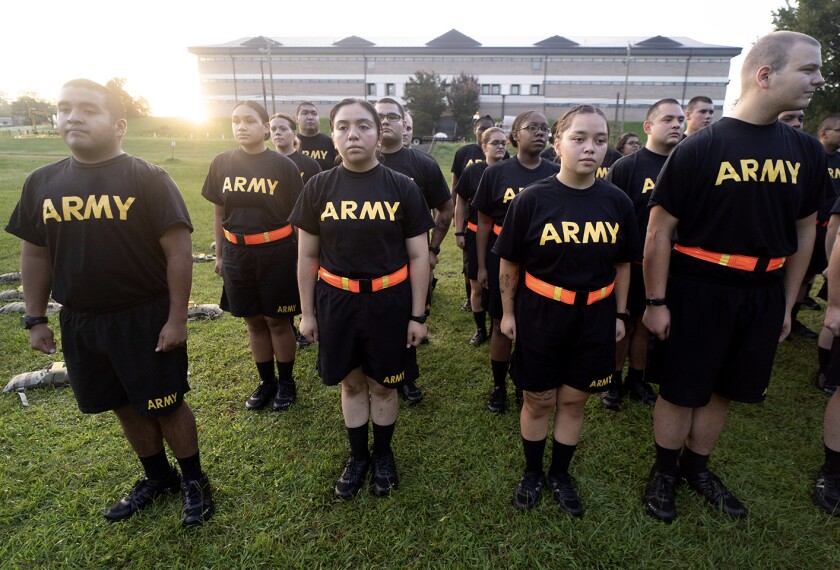A Department of Education panel studying Title IX floated ideas last week that, if put into place, could drastically alter the way colleges and universities determine if they’re fairly providing athletic opportunities to both men and women.
At a Dec. 3-4 meeting in Philadelphia that focused primarily on higher education, the 15-member Commission on Opportunities in Athletics talked about ways to correct what some believe are problems with the 30-year-old statute that prohibits sex discrimination at educational institutions that accept federal funds. At a previous meeting, in September, the board heard testimony from precollegiate officials indicating that, while some girls lag behind in the quality of athletic facilities, opportunities for participation are generally more equitable than in higher education.
The meeting last week was the latest in a series of discussions since this past summer that will culminate in a report containing recommendations for changes, due to Secretary of Education Rod Paige by Jan. 31. The panel is scheduled to meet again in Washington Jan. 8.
Currently, most colleges and universities use a proportionality test to determine whether they’re complying with the law. Generally, the test requires that the percentage of female athletics on a school’s teams be roughly equal to the percentage of females in the overall school population.
But some male athletes have complained that the approach has led colleges and universities to make cuts in men’s sports—including the elimination of some entire teams in sports such as wrestling and gymnastics—to get the percentages right. But some women’s advocates say female athletes still aren’t treated equally to their male counterparts.
During the Philadelphia meeting, some commissioners proposed that schools use surveys instead of proportionality to gauge the level of female interest in athletics and use the results as a guide for setting the threshold proportions.
Commissioner Deborah A. Yow, the athletics director at the University of Maryland College Park, suggested that a 50-50 ratio, regardless of enrollment figures, might be the way to go, while allowing some percentage of variation, possibly a 55-to-45 range.
Other ideas were to count only college students of “traditional age” in calculating proportionality. Some colleges have a high percentage of older students, many of them women, who likely would not participate in athletics, but who are currently included in Title IX-related calculations.
“This was a very preliminary draft of what someday might be recommendations,” said commission co-chairman Ted Leland, the director of athletics at Stanford University. “I thought there was some really exciting and maybe even scary stuff.”
‘Extremely Dangerous’
But Cary Groth, a commission member and the athletic director at Northern Illinois University in DeKalb, said she’d like to see more emphasis placed on the other ways schools can comply with Title IX of the Education Amendments of 1972.
Schools may also demonstrate compliance by having expanded women’s sports in response to interest on campus, or by showing that female athletes have been fully accommodated by existing programs. But many schools do not use those approaches because proportionality is currently the only method considered impervious to legal challenges.
Ms. Groth said she would like to see the Education Department issue more definitive guidance on how schools can meet these tests instead of relying solely on proportionality. But she cautioned that none of the proposals discussed in Philadelphia would prevent men’s teams from being cut for financial reasons. “If you change Title IX, it doesn’t guarantee that those programs aren’t going to continue to be dropped,” she said.
Some of those watching the process said they were uncomfortable with the direction the panel seemed to be taking. Jocelyn Samuels, the vice president of the National Women’s Law Center, based in Washington, said changes being discussed could have negative impacts on women and girls, both on the athletic field and in the classroom
“I was just appalled by the tone and tenor of it,” she said of the possible direction. “A lot of what they’re proposing is extremely dangerous.”
On the other side of the debate, Mike Moyer, the executive director of the National Wrestling Coaches Association, also has concerns.
The discussions in Philadelphia were wide-ranging, said Commissioner Percy Bates, a professor of education at the University of Michigan in Ann Arbor. He said he ultimately did not expect everyone on the panel to agree on the recommendations that will be made to Secretary Paige.
“The only thing we’re all in agreement on,” he said, “is that Title IX is a good thing.”




